Introduction
This chapter describes the basic functions and configurations of the AnyLink server.
1. Overview
AnyLink consists of two separate servers with different roles.
-
Runtime Engine (RTE) server
Actually implements services and handles requests. It consists of the following components.
-
Service Flow Engine
Executes service flows that define a flow of handling a request.
-
Adapter
Supports connections to various applications through appropriate protocols. For more information about each adapter, refer to relevant guides.
-
Multi-binding Router
Allows to dynamically perform routing between components at execution time
-
-
Data Integration Server (DIS)
Manages resources to deploy and environment configuration information. It receives development resources from Studio, manages them, sends them to the runtime engine server, and manages the history. It also creates and compiles source code. It provides information for WebAdmin and Studio, and handles commands requested by WebAdmin and Studio. It requires an RDBMS to manage development resources and provide monitoring information such as log statistics.
2. Key Functions
AnyLink is responsible for integration between different systems, and provides external services for various clients. AnyLink minimizes integration overhead in order to rapidly handle I/O tasks and minimize wait time. Also, it has protocols and application adapter functions for handling requests and responses of various types of servers and clients, as well as a function that orchestrates the flow of various services.
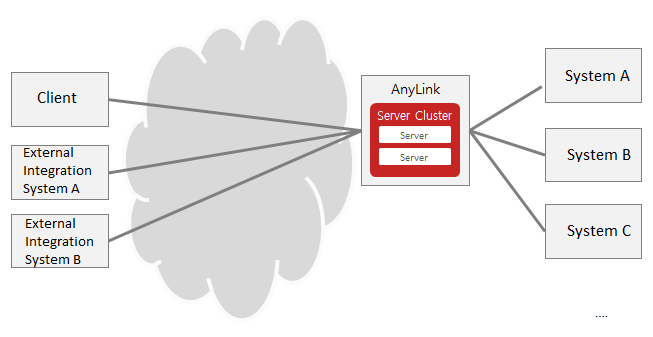
AnyLink is responsible for internal integrations, as well as providing a layer of an integrated external interface which hides the details of an internal system.
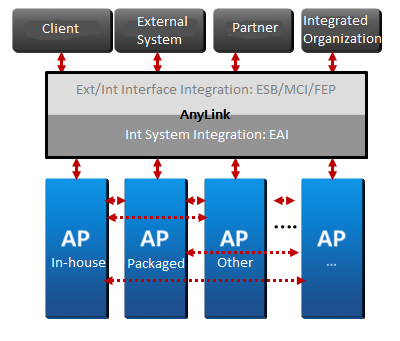
The following is a detailed description of the hierarchy role that AnyLink performs.
-
Service Orchestration
AnyLink acts as a node that controls the entire enterprise system architecture.
AnyLink is a control node that handles I/O operations and events, and is responsible for orchestration with each business process node.
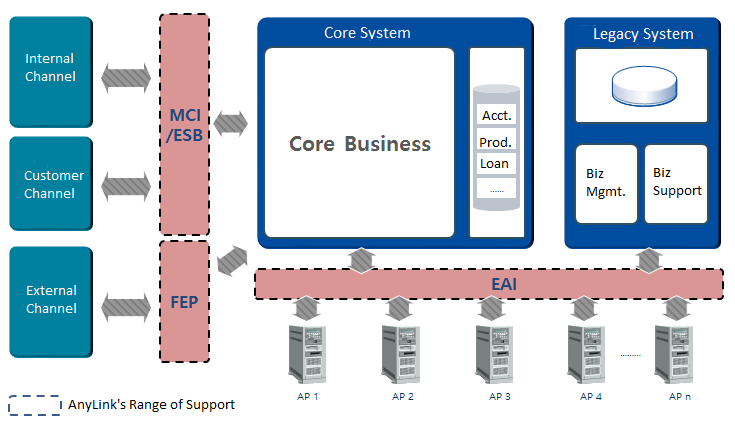 Role of AnyLink in an Enterprise System Architecture
Role of AnyLink in an Enterprise System Architecture -
Proxy Service
-
Wrapper Service
-
Composite Service
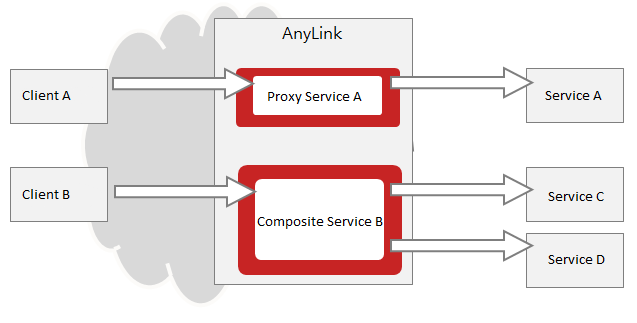 Proxy Service Structure
Proxy Service Structure
-
-
Linkage Service
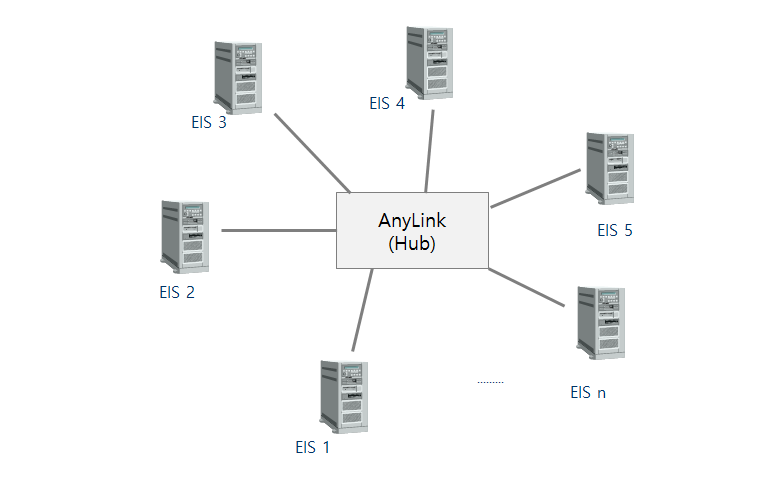 Internal Linkage - Hub & Spoke Structure
Internal Linkage - Hub & Spoke Structure -
Self Implemented Service
-
Integration logic and business logic are combined together
-
3. Server Configuration
AnyLink can be used in two types of environments: execution environments and development and deployment environments. An execution environment consists of the AnyLink runtime engine servers and target systems to be integrated, and has several structures depending on the configurations and structures of the target systems (refer to Proxy Service Structure). A development and deployment environment consists of the data integration server (for deployment), the runtime engine server (for execution), as well as WebAdmin (for operation management) and Studio (for rule creation and environment configuration).
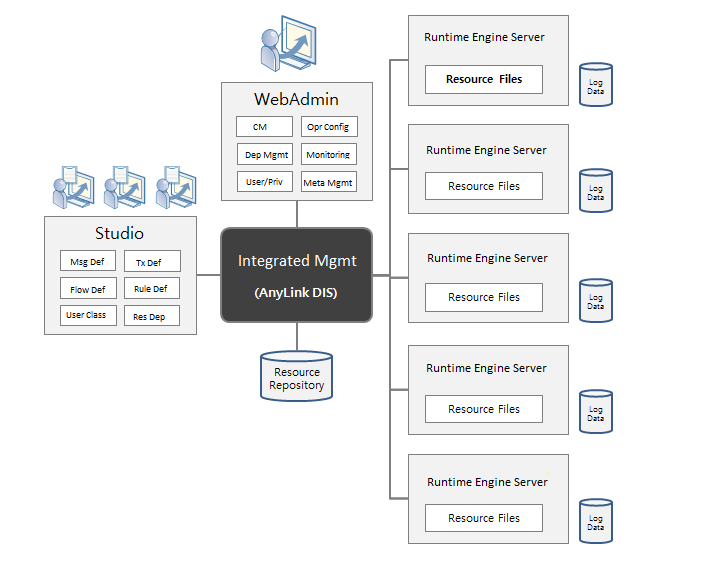
AnyLink separates the development and deployment server (Data Integration Server, DIS) and the operation server (Runtime Engine, RTE), so that in an actual operation environment, the RTE server can normally execute services regardless of whether the DIS is running or not.